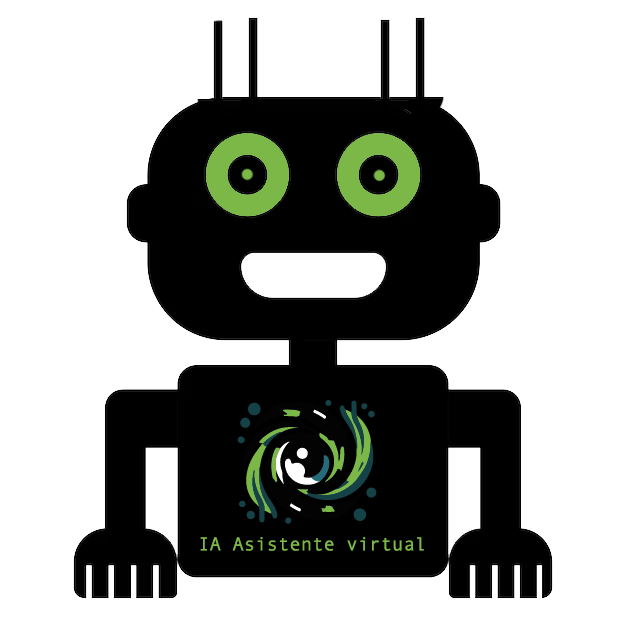Fighting Misinformation
Benchmarking Education Initiatives in Spain
DOI:
https://doi.org/10.62161/revvisual.v17.5915Keywords:
Disinformation, Educational projects, Innovation, Fake news, Social mediaAbstract
Misinformation is a significant problem affecting society on both individual and collective levels, impacting emotional, psychological, and national security aspects. Due to the lack of a standardized response from educational administrations, civil society initiatives have increased to highlight the issue's severity and equip young people with essential tools. This research identifies, analyzes, and compares recent initiatives in Spain focused on educating children and young people using a qualitative case analysis methodology. The study emphasizes the need for innovative, compulsory, and transversal educational initiatives from an early age, addressing the uncoordinated responses of public and private institutions.
Downloads
Global Statistics ℹ️
|
83
Views
|
50
Downloads
|
|
133
Total
|
|
References
Aguaded Gómez, I. (2009). El Parlamento Europeo apuesta por la alfabetización mediática. En: Comunicar, Vol. 16, Núm. 32. Huelva: Grupo Comunicar, 7-8.
Aparici, R., y García Matilla, A. (1998). Lectura de imágenes. Madrid: Ediciones de la Torre.
Aula Check (s.f.). https://aulacheck.ibercivis.es/
Barral, L.; Moraño; X.; Barral, P. y Guiteras, X. (2021) Desactiva tus prejuicios y piénsalo otra vez. Encuesta sobre prejuicios nocivos en la juventud española. Informe de Resultados. Madrid. Fad: Centro Reina Sofía sobre Adolescencia y Juventud. https://doi.org/10.5281/zenodo.4742074
Benavides Vanegas, F. S. (2020). Emoticons, memes and cyberbullying: gender equality in Colombia. Social Semiotics, 30(3), 328-343. https://doi.org/https://doi.org/10.1080/10350330.2020.1731169
Blanco-Alfonso, I., Rodríguez-Fernández, L., & Arce-García, S. (2022). Polarization and hate speech with gender bias associated with politics: analysis of interactions on Twitter. Revista de Comunicación, 21(2), 33-50. https://doi.org/10.26441/RC21.2-2022-A2
BOE Ley 13/2022, de 7 de julio, General de Comunicación Audiovisual. https://www.boe.es/eli/es/l/2022/07/07/13/con
BOE Real Decreto 95/2022, de 1 de febrero, por el que se establece la ordenación y las enseñanzas mínimas de la Educación Infantil https://www.boe.es/eli/es/rd/2022/02/01/95/con
BOE Real Decreto 157/2022, de 1 de marzo, por el que se establecen la ordenación y las enseñanzas mínimas de la Educación Primaria https://www.boe.es/eli/es/rd/2022/03/01/157/con
Bustos Díaz, J., & Ruiz del Olmo, F. J. (2020). Fuentes verificadas ante las Fakes News. El caso de Facebook, Google y Microsoft frente a la desinformación durante el COVID-19. Revista De Estilos De Aprendizaje, 13(26), 7–18. https://doi.org/10.55777/rea.v13i26.2158
Caza Bulos (s.f.). https://www.cazabulos.es/
Colegio Profesional de Periodistas de Andalucía (s.f.). Puesta en marcha del Taller ‘Mayores con Wifi’ para la alfabetización mediática de las personas de edad avanzada. Periodistasandalucia.es. https://periodistasandalucia.es/mayores-con-wifi-alfabetizacion-mediatica/
Comisión Europea. (2021). Eurobarómetro Standard 94. Opinión Pública en la Unión Europea - España invierno 2020-2021. Kantar Belgium. https://europa.eu/eurobarometer/surveys/detail/2355
Congreso de los Diputados, Oficina de Ciencia y Tecnología del Congreso. Informe C: Desinformación en la era digital. (2023) www.doi.org/10.57952/j3p6-9086
Desenreda (s.f.). https://colaboraeducacion30.juntadeandalucia.es/educacion/colabora/web/comunica/desenreda.-taller-de-alfabetizacion-mediatica
Desfake (s.f.). https://desfake.cat/
Digital Education Action Plan (2021-2027) https://education.ec.europa.eu/focus-topics/digital-education/action-plan
EduCAC (s.f.). https://www.educac.cat/
Europe’s Digital Decade: digital targets for 2030 https://commission.europa.eu/strategy-and-policy/priorities-2019-2024/europe-fit-digital-age/europes-digital-decade-digital-targets-2030_en
Ferrés Prats, J. (2007). La competencia en comunicación audiovisual: propuesta articulada de dimensiones e indicadores. En: Quaderns del CAC, Vol. 25. Barcelona: Consell de l’Audiovisual de Catalunya, 9-17
Ferrés Prats, J., y Piscitelli, A. (2012). La competencia mediática: propuesta articulada de dimensiones e indicadores. En: Comunicar, Núm. 38. Huelva: Grupo Comunicar, 75-82.
Figueira, J., & Santos, S. (2019). Percepción de las noticias falsas en universitarios de Portugal: análisis de su consumo y actitudes. Profesional de la Información, 28(3), 1-16. https://doi.org/10.3145/epi.2019.may.15
García Avilés, J. A. (2024). Nueve propuestas para llevar la alfabetización mediática a otro nivel. Revista de Innovación en Periodismo. https://mip.umh.es/blog/2024/02/13/nueve-propuestas-para-llevar-la-alfabetizacion-mediatica-a-otro-nivel/
García Matilla, A. (2003): Educomunicación en el siglo XXI. En R. Aparici (Coord.): “Comunicación educativa en la sociedad de la información” (p. 111). UNED
Gelfert, A. (2018). Fake news: A definition. Informal Logic, 38(1), 84-117. https://doi.org/10.22329/il.v38i1.5068
González-Fernández, N., García, A. R., & Gómez, I. A. (2019). Alfabetización mediática en escenarios familiares. Diagnóstico, necesidades y propuesta formativa. Education in the Knowledge Society (EKS), 20(13), 1-11. https://doi.org/10.14201/eks2019_20_a11
Gil, I., y Marzal-Felici, J. (2023). ¿Cómo impulsar la educomunicación y la alfabetización mediática desde el sistema educativo en España? Diagnóstico, problemática y propuestas por los expertos. Revista Mediterránea de Comunicación, 14(2), 207-226. https://www.doi.org/10.14198/MEDCOM.24011
Herrero-Curiel, E. y La Rosa-Barrolleta (2021). La alfabetización mediática en secundaria. En Cultura, economía y educación: nuevos desafíos en la sociedad digital / coord. Julieti Sussi de Oliveira, Luis Manuel Fernández Martínez, 2021, ISBN 978-84-1377-585-2, págs. 76-95 Dykinson
Herrero-Diz, P., Conde-Jiménez, J., & Reyes de Cózar, S. (2020). Teens’ Motivations to Spread Fake News on WhatsApp. Social Media and Society, 6(3), 1-14. https://doi.org/10.1177/2056305120942879
Izquierdo-Grau, A. (2019). Contrarelats de l’odi a l’ensenyament i l’aprenentatge de les Ciències Socials. Una recerca interpretativa i crítica a l’Educació Secundària. En Tesis Doctoral en Universitat Autònoma de Barcelona.
Learn to Check (s.f.). https://learntocheck.org/
Lessenski, M. (2023). “Bye, bye, birdie”: Meeting the Challenges of Disinformation. The Media Literacy Index 2023. https://wellcome.org/sites/default/files/wellcome-global-monitor-2018.pdf
Neubauer Esteban, A. (2020). La lucha de la Unión Europea contra la desinformación y las fake news durante la crisis del coronavirus. Revista De Estilos De Aprendizaje, 13(26), 50–60. https://doi.org/10.55777/rea.v13i26.2145
Novoa-Jaso, María Fernanda, Sierra, Aurken, Labiano, Roncesvalles y Vara-Miguel, Alfonso (2024): Digital News Report España 2024. Calidad periodística y pluralidad: claves para la confianza informativa en la era de la inteligencia artificial (IA). Pamplona: Servicio de Publicaciones de la Universidad de Navarra. DOI: https://doi.org/10.15581/019.2024
ONTSI. Observatorio Nacional de Tecnología y Sociedad (2022). Beneficios y riesgos del uso de Internet y las redes sociales. 2022. Madrid. Ministerio de Asuntos Económicos y Transformación Digital.
Pangrazio, L. (2018). What’s new about ‘fake news’? Critical digital literacies in an era of fake news, post-truth and clickbait. Páginas de Educación, 11(1), 6. https://doi.org/10.22235/pe.v11i1.1551
Pérez Tornero, J.M. (2004). Promoting Digital Literacy. Informe Final. En: Comprender la alfabetización digital. Barcelona: Gabinete de Comunicación y Educación.
Periodistas de Castilla y León (2023). El proyecto ‘inFORMADOS’ ha formado en alfabetización mediática a más de 800 alumnos de 34 institutos de Castilla y León. https://www.colegioperiodistascyl.com/el-proyecto-informados-ha-formado-en-alfabetizacion-mediatica-a-mas-de-800-alumnos-de-34-institutos-de-castilla-y-leon/
Prensa sin edad (s.f.). Proyecto de alfabetización mediática de la Asociación de la Prensa de Málaga. https://aprensamalaga.com/prensa-sin-edad/portada#:~:text=Prensa%20Sin%20Edad%20es%20un,la%20posible%20brecha%20digital%20existente
Ramírez Corzo, C. A. (2019). Noticias falsas: el nuevo poder en la era de la posverdad. Revista de Ciencias Humanas y Sociales, Año 35, Es (25), 364-413.
Sádaba, C.; Salaverría, R.; Bringué-Sala, X. (2023). How to teach the elderly to detect disinformation: a training experiment with WhatsApp. Profesional de la información, v. 32, n. 5, e320504. https://doi.org/10.3145/epi.2023.sep.04
Surfear la red (s.f.). Obtenido de: https://www.campusfad.org/surfear-la-red/
Tejedor Calvo, S., Sabés Turmo, F., García Graña, G., & Portales Oliva, M. (2016). Algunas tendencias del escenario ciberperiodístico: del periodismo «fact-cheking» al periodismo «slow». En F. Sabés Turmo & J. J. Verón (Eds.), La comunicación del presente: Más allá de las pantallas (Número March, pp. 134-141). Asociación de Periodistas de Aragón.
Tejedor Calvo, S.; Cervi, L.; Robledo-Dioses, K.; Pulido Rodríguez, C. (2022). Desafíos del uso de TikTok como plataforma educativa: Una red multitemática donde el humor supera al debate. Aula Abierta, 51(2), 121-128. https://doi.org/10.17811/rifie.51.2.2022.121-128
Tejedor, S.; Sancho-Ligorred, B. & Rigall, M. (2023). Verificando la información: mapping de proyectos y fact-checkers contra la infodemia en La comunicación en un contexto convulso. 508-531. Editorial Dykinson, 9788411228237. Madrid.
Tejedor, S. & Sancho-Ligorred, B. (2023). Cartografía mundial de herramientas, fact-checkers y proyectos contra la infodemia. Estudios sobre el Mensaje Periodístico, 29(4), 933-942. https://doi.org/10.5209/esmp.87838
Tsfati, Y., Boomgaarden, H. G., Strömbäck, J., Vliegenthart, R., Damstra, A., & Lindgren, E. (2020). Causes and consequences of mainstream media dissemination of fake news: literature review and synthesis. Annals of the International Communication Association, 44(2), 157-173. https://doi.org/10.1080/23808985.2020.1759443
Unesco (2020). Periodismo, libertad de prensa y COVID-19. https://unesdoc.unesco.org/ark:/48223/pf0000373573_spa
Universidad del País Vasco. La UPV/EHU lidera un innovador proyecto europeo para combatir la desinformación en entornos educativos diferentes. Campusa: la revista online de la UPV. https://www.ehu.eus/es/-/upv-ehu-lidera-un-innovador-proyecto-europeo-para-combatir-la-desinformacion-en-entornos-educativos-diferentes
Universidad de Zaragoza & Asociación de Periodistas de Aragón (s.f.). Unidad de alfabetización mediática. Aragón.
Villabona García, M. R. (2021). #NoDESinformación, una propuesta didáctica para Educación Secundaria. Ministerio de Educación y Formación Profesional. https://www.educacionfpydeportes.gob.es/dam/jcr:3c54f03c-c0f5-4edd-a2b9-0e320bba0ff3/-nodesinformaci-n-propuesta-did-ctica.pdf
Vosoughi, S., Roy, D., & Aral, S. (2018). The spread of true and false news online. Social Science, 1146-1151. https://doi.org/10.1126/science.aap9559
Downloads
Published
How to Cite
Issue
Section
License
Copyright (c) 2025 Authors retain copyright and transfer to the journal the right of first publication and publishing rights

This work is licensed under a Creative Commons Attribution-NoDerivatives 4.0 International License.
Those authors who publish in this journal accept the following terms:
-
Authors retain copyright.
-
Authors transfer to the journal the right of first publication. The journal also owns the publishing rights.
-
All published contents are governed by an Attribution-NoDerivatives 4.0 International License.
Access the informative version and legal text of the license. By virtue of this, third parties are allowed to use what is published as long as they mention the authorship of the work and the first publication in this journal. If you transform the material, you may not distribute the modified work. -
Authors may make other independent and additional contractual arrangements for non-exclusive distribution of the version of the article published in this journal (e.g., inclusion in an institutional repository or publication in a book) as long as they clearly indicate that the work was first published in this journal.
- Authors are allowed and recommended to publish their work on the Internet (for example on institutional and personal websites), following the publication of, and referencing the journal, as this could lead to constructive exchanges and a more extensive and quick circulation of published works (see The Effect of Open Access).













